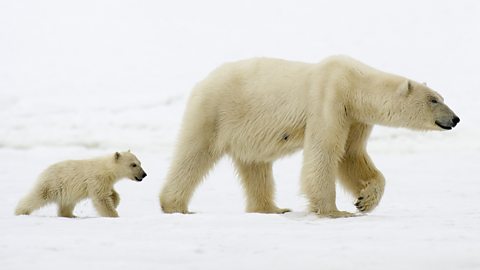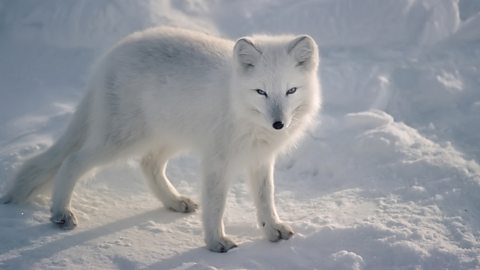Animal adaptation to the tundra climage
Animals have had to adapt to the tundra climate in ways that keep them warm and help them find food.
Polar bear

Polar bears are well adapted for survival in the Arctic. Their adaptations include:
- a white appearance - as camouflage from prey on the snow and ice
- thick layers of fat and fur - for insulation against the cold
- a small surface area to volume ratio - to minimise heat loss
- a greasy coat that sheds water after swimming - to help reduce heat loss
- large feet - to distribute their load and increase grip on the ice
Arctic fox

The Arctic fox lives in a cold habitat. It has thick fur in order to retain its body heat. The coat of the Arctic fox is always thick and highly insulating.
In winter, the Arctic fox's coat is white. This provides camouflage against snow and ice. In spring and summer, the coat changes to brown or grey. This gives better camouflage when surface snow and ice have melted away.
Arctic foxes have small ears. This help prevent heat loss. The ears of arctic foxes are pointed forwards and so are very directional. They can hear their main prey, lemmings, moving through tunnels they make in the snow. This allows the fox to pounce on the area where the sound is coming from without needing to see the prey and with the prey unaware that the fox is about to pounce.